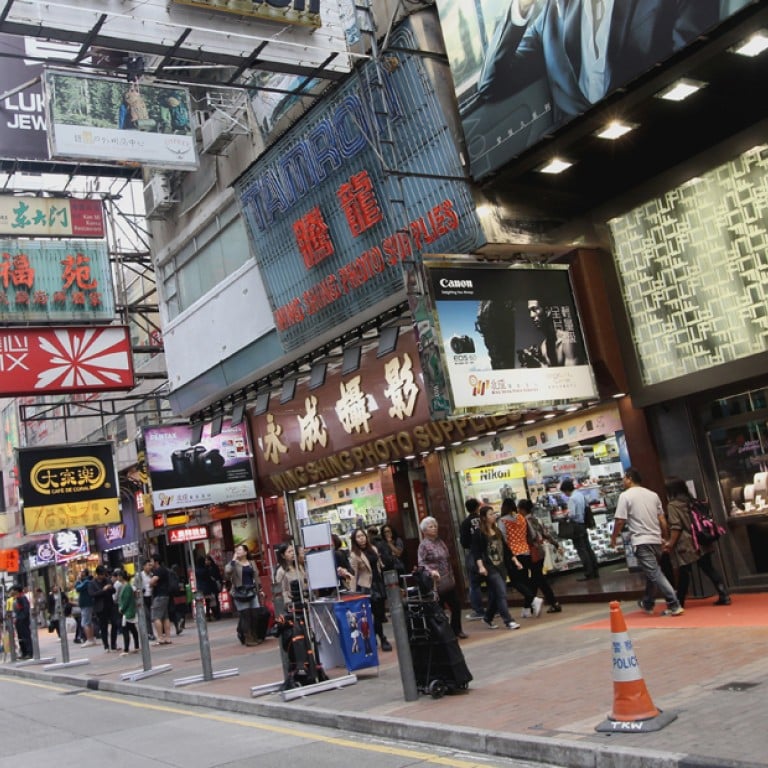
Found in Mong Kok: a 'shared space' for people and cars
Carine Lai says recent adjustments to the Mong Kok pedestrian zone have inadvertently created a de facto 'shared space', Hong Kong's first
Several months ago, I predicted that the curtailment of the Mong Kok pedestrian zone's hours would result in a traffic-choked, overcrowded nightmare. I was wrong.
It turns out that because the street is divided into three segments, each with one-way traffic going in the opposite direction to the neighbouring segment, it is unusable to through traffic. As a result, traffic volume is very low.
This has allowed the street to settle into a calmer and less congested rhythm. It has become a sort of social experiment, one which may have a groundbreaking impact on the way pedestrians and traffic are managed in Hong Kong.
On a recent weeknight visit to Sai Yeung Choi Street, the first thing I noticed was that people completely ignore the fact it is no longer a pedestrian-only street. They continue to use the full width of the street, strolling down the middle of the road in groups of five or six, and only moving aside when a car comes along.
While most of the stalls and street performers are gone (to the relief of nearby residents), a few sketch artists and fortune tellers, and a greater number of broadband and cable TV salesmen, can still be found lined up along the pavement or, in some cases, occupying parking spaces.
One local business continues to employ a man to wave an advertisement in the middle of the street, although he moves off to the side for cars.
The street has become a de facto "shared space" in which pedestrians and vehicles mix.
Most of this is technically illegal. Pedestrians are not allowed to cross a road anywhere within 15 metres of a marked crossing, except for on the crossing itself, nor are they allowed to linger on the road for any longer than necessary to cross it.
Yet, in spite of this, it all seems to work. Vehicle speeds are low, and pedestrians do not appear to feel threatened. During my visit, I did not see any drivers resort to using their horn to honk at pedestrians or displaying other aggressive behaviour.
The worst thing that could happen now is for someone in the Transport Department to declare the street unsafe and erect more railings to keep pedestrians off the road.
All this would do is encourage people to skirt around them to avoid the overcrowded pavements, encourage drivers to drive faster and irritate shoppers trying to cross the road.
International studies have shown that traditional traffic segregation measures are often counterproductive in busy urban environments as they goad pedestrians into taking risks and lull drivers into a false sense of complacency.
Instead, the government should reinforce what is happening. Sai Yeung Choi Street should be designated a pedestrian priority zone, in which pedestrians have the right of way over vehicles. A low speed limit of 20km/h should be introduced. The existing railings, which are currently ignored anyway, could be removed.
If successful, the strategy could be replicated in other busy shopping streets with low traffic volumes. Many other cities around the world have been adopting "shared space" schemes. It is fortuitous that Hong Kong has ended up with one by accident.
